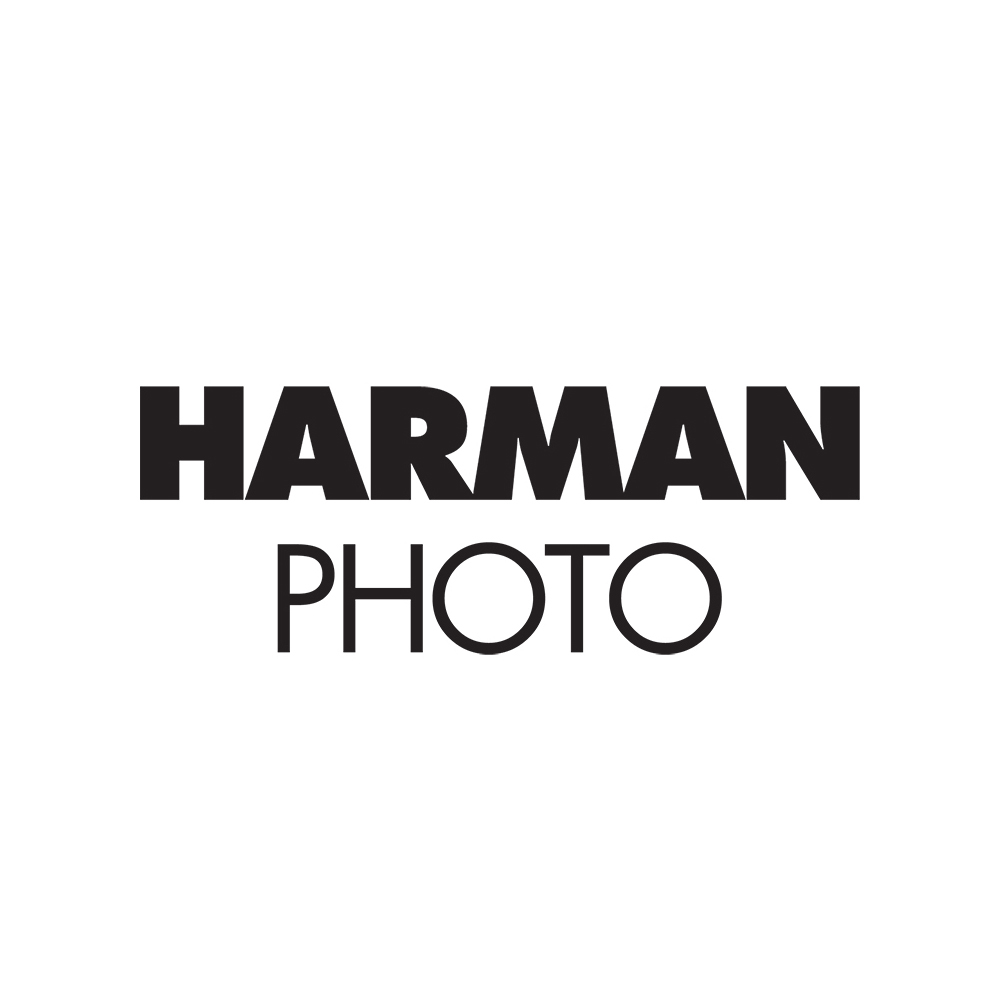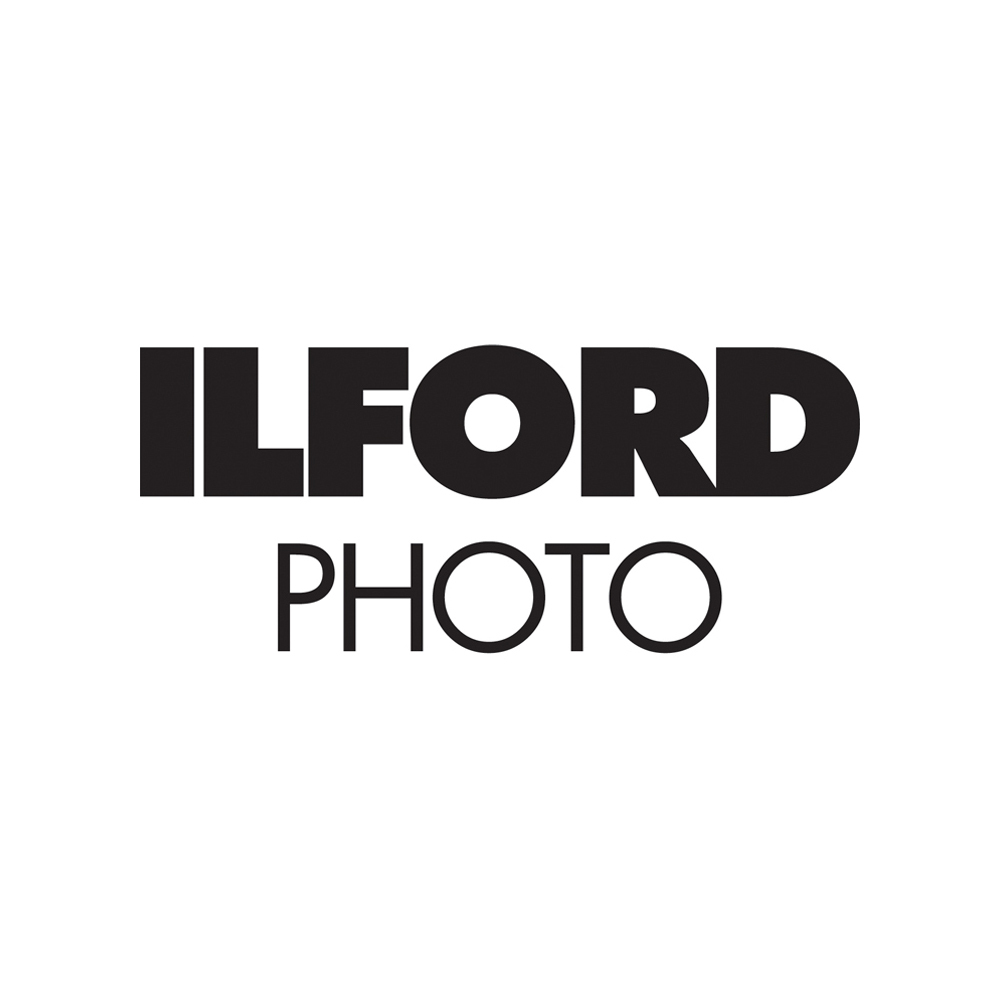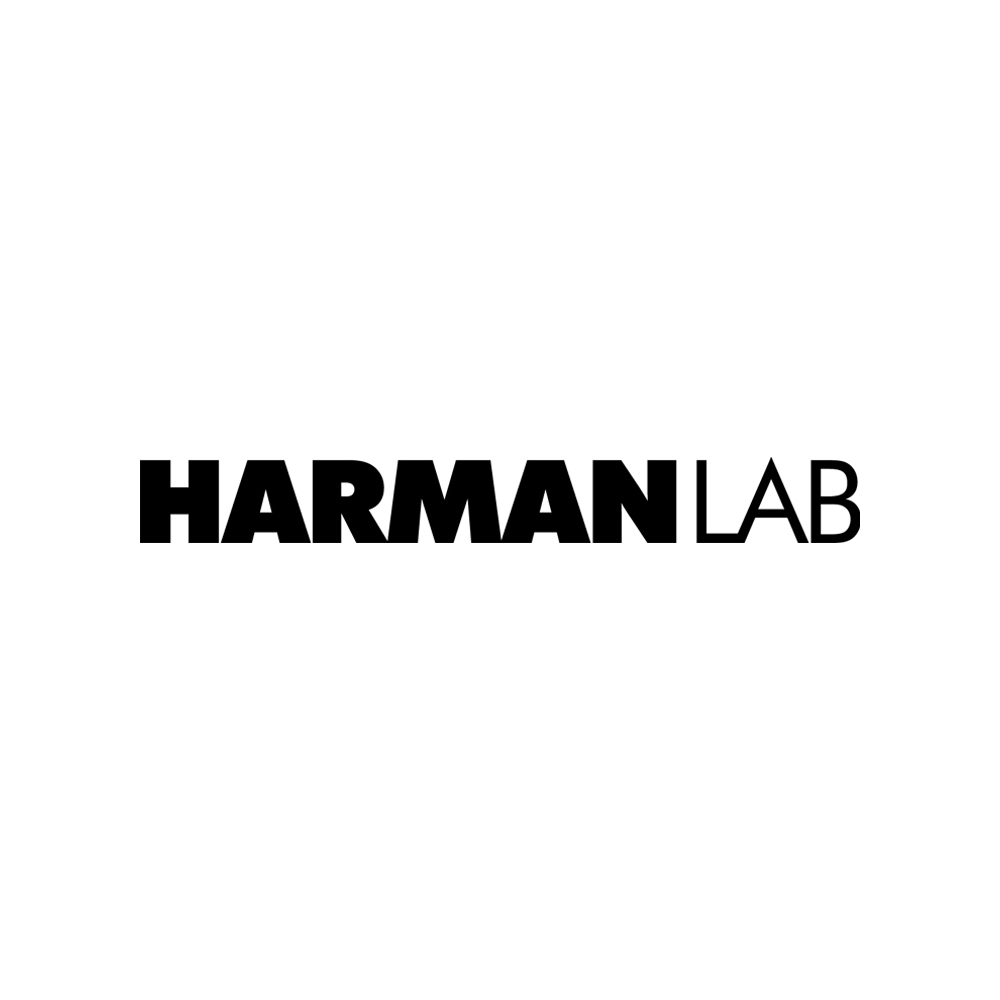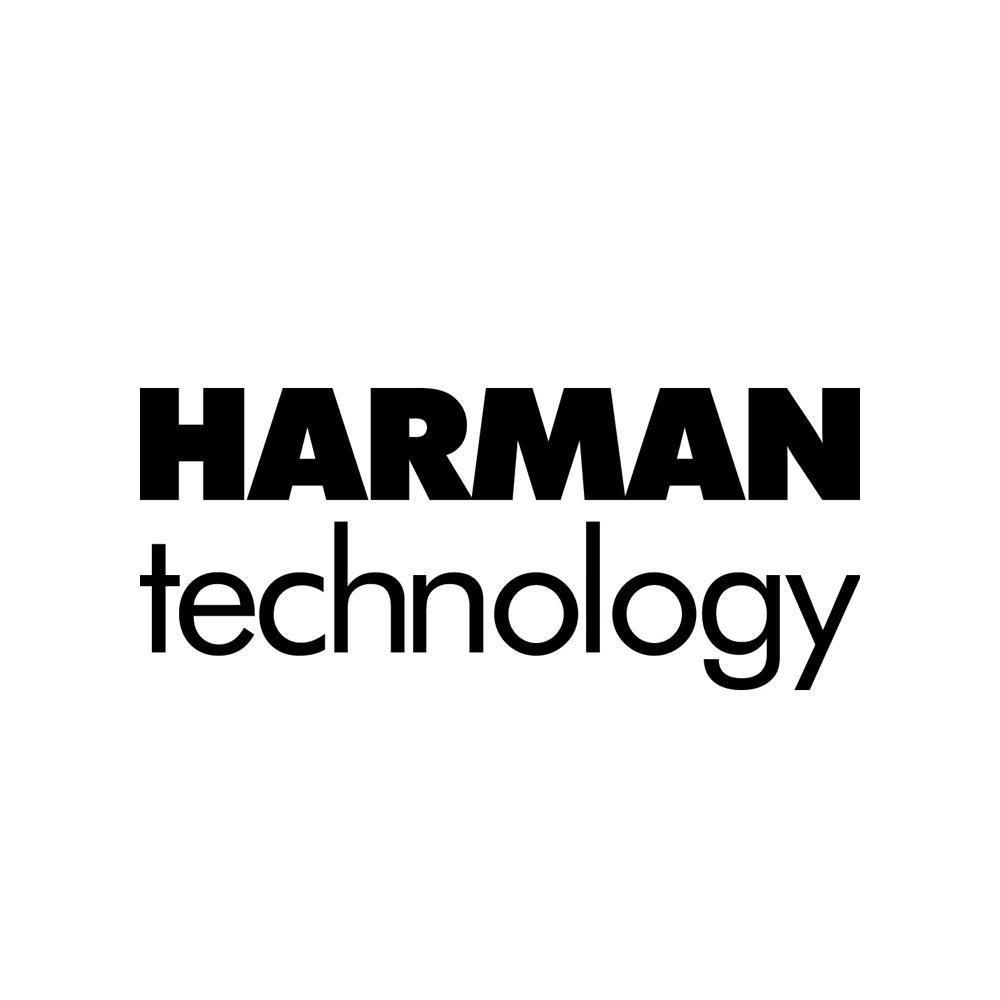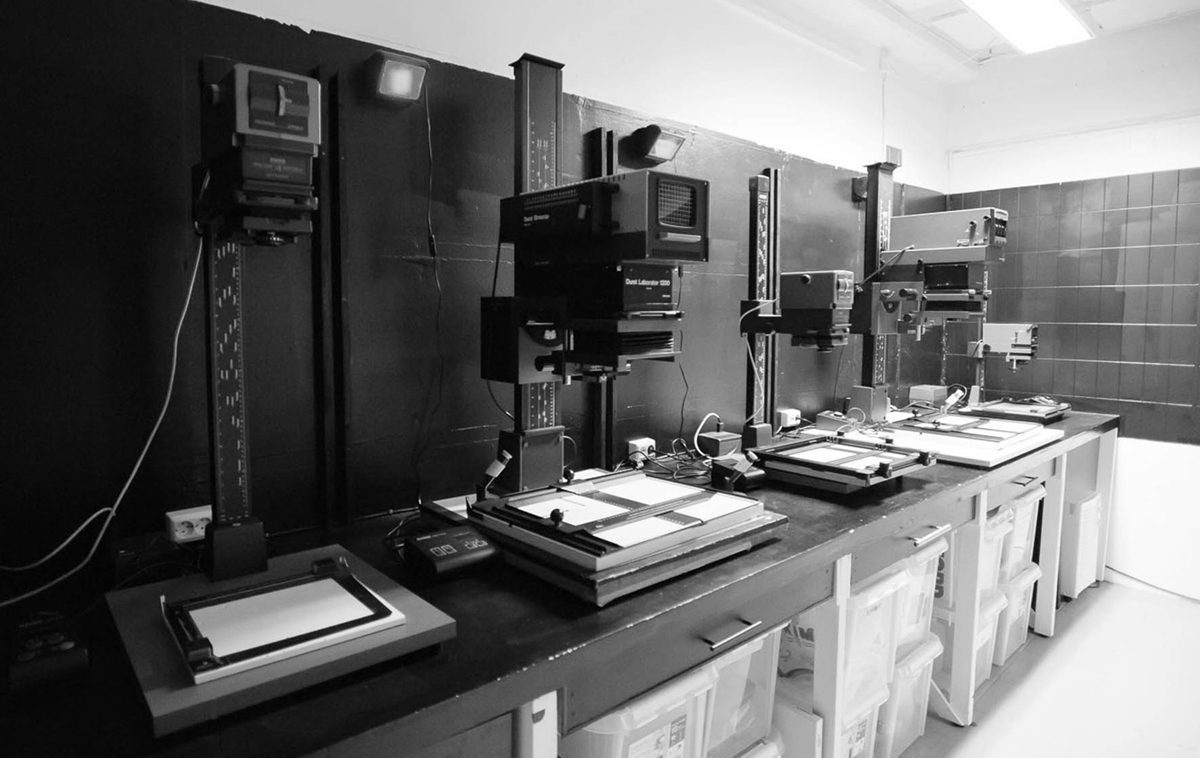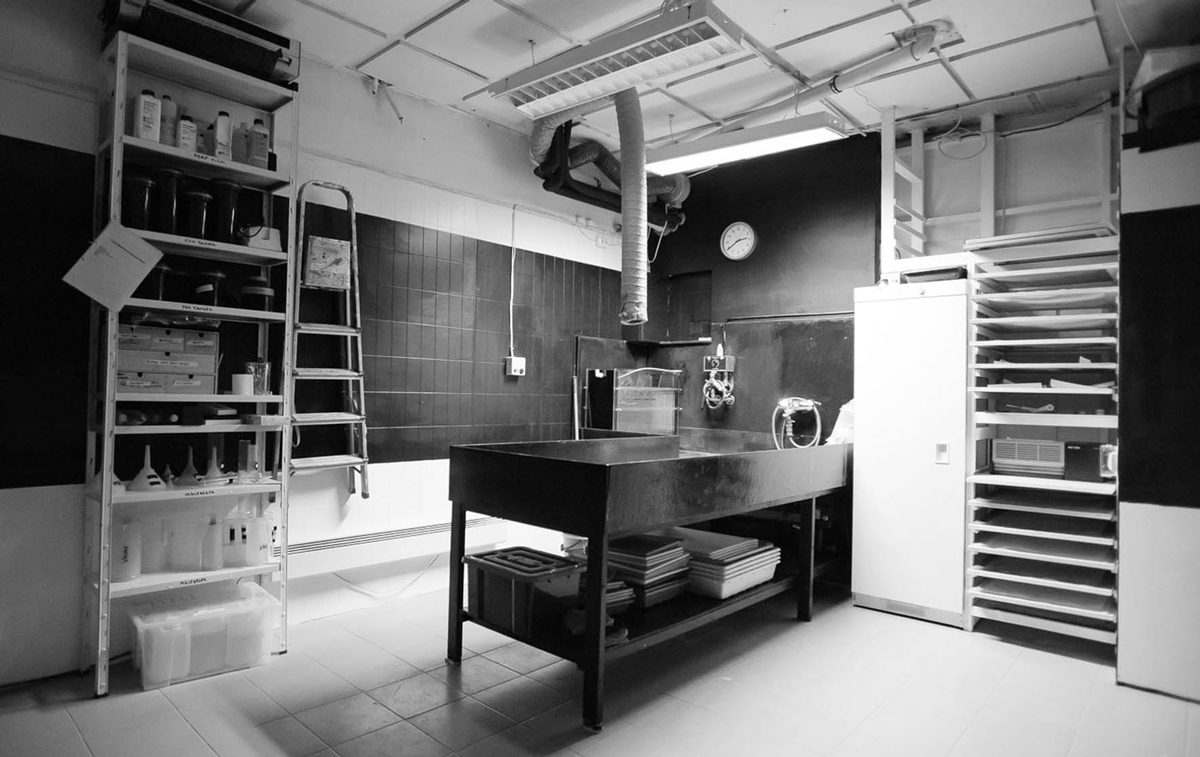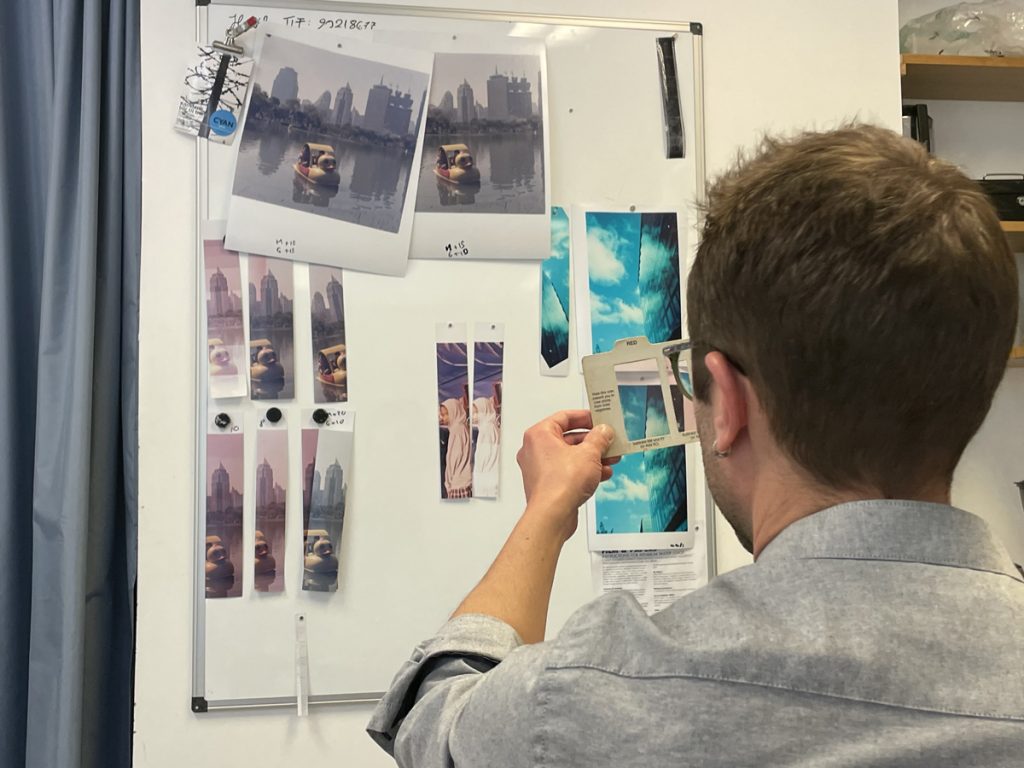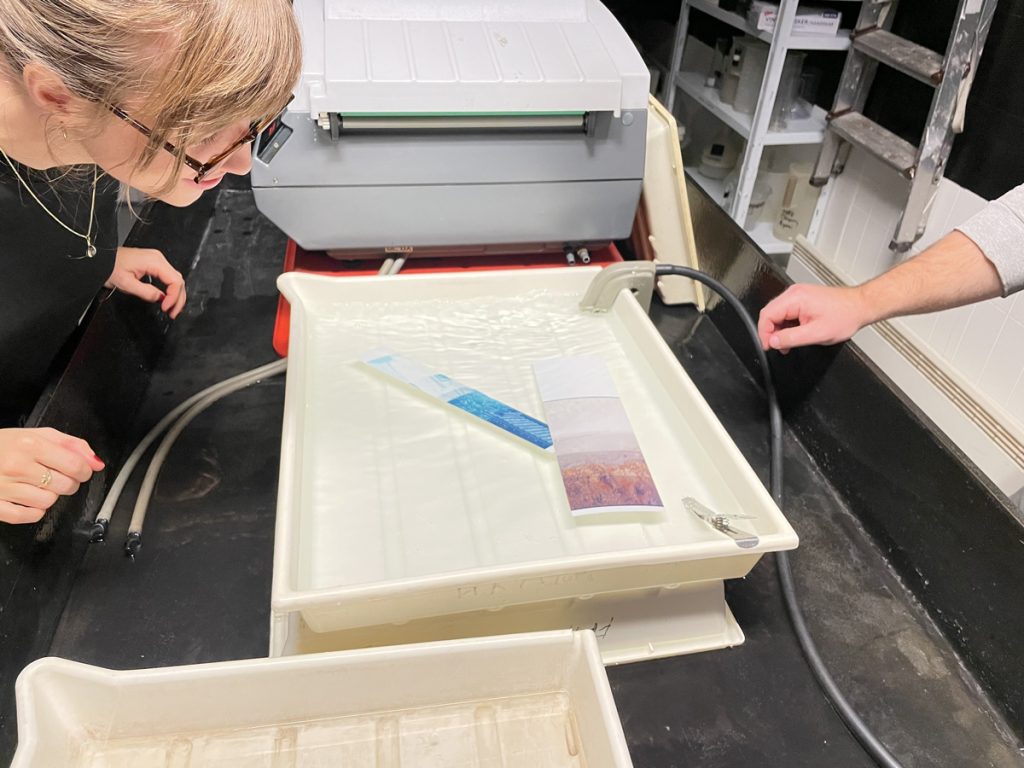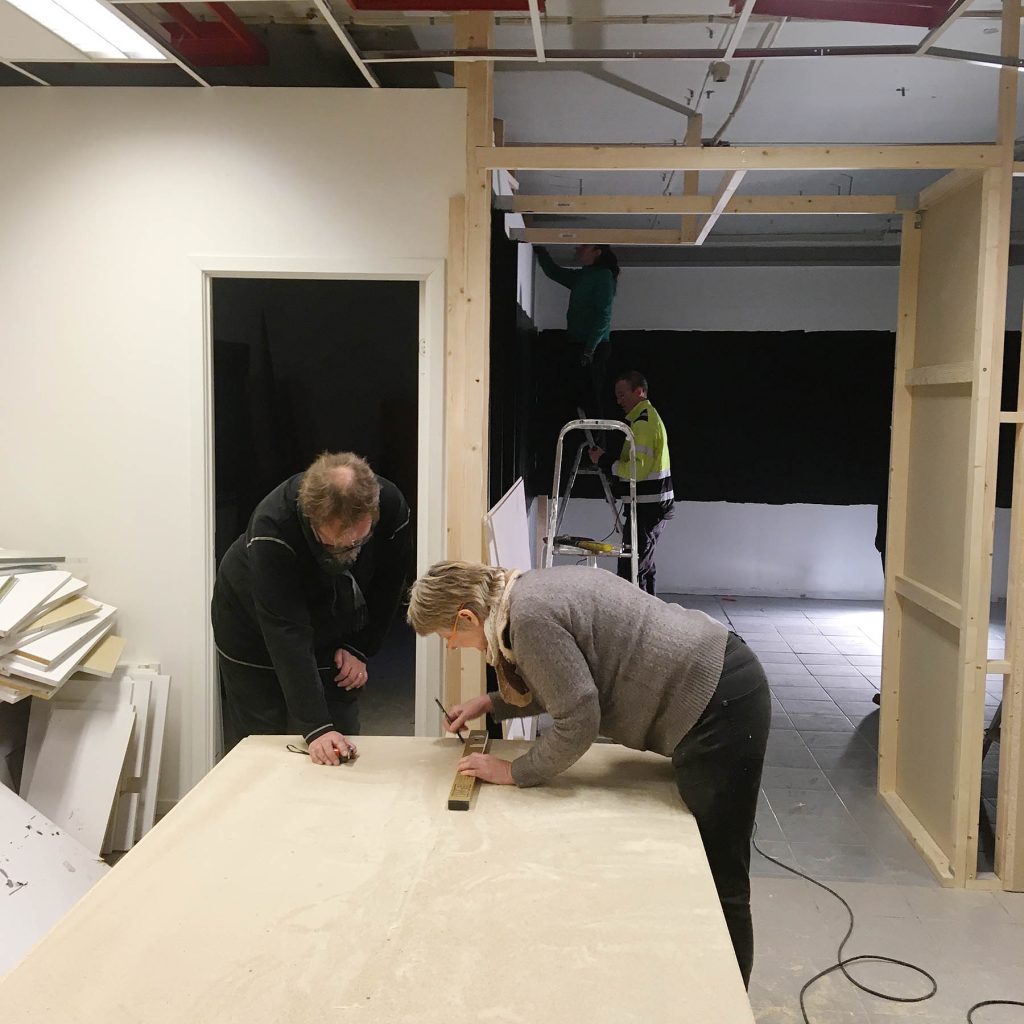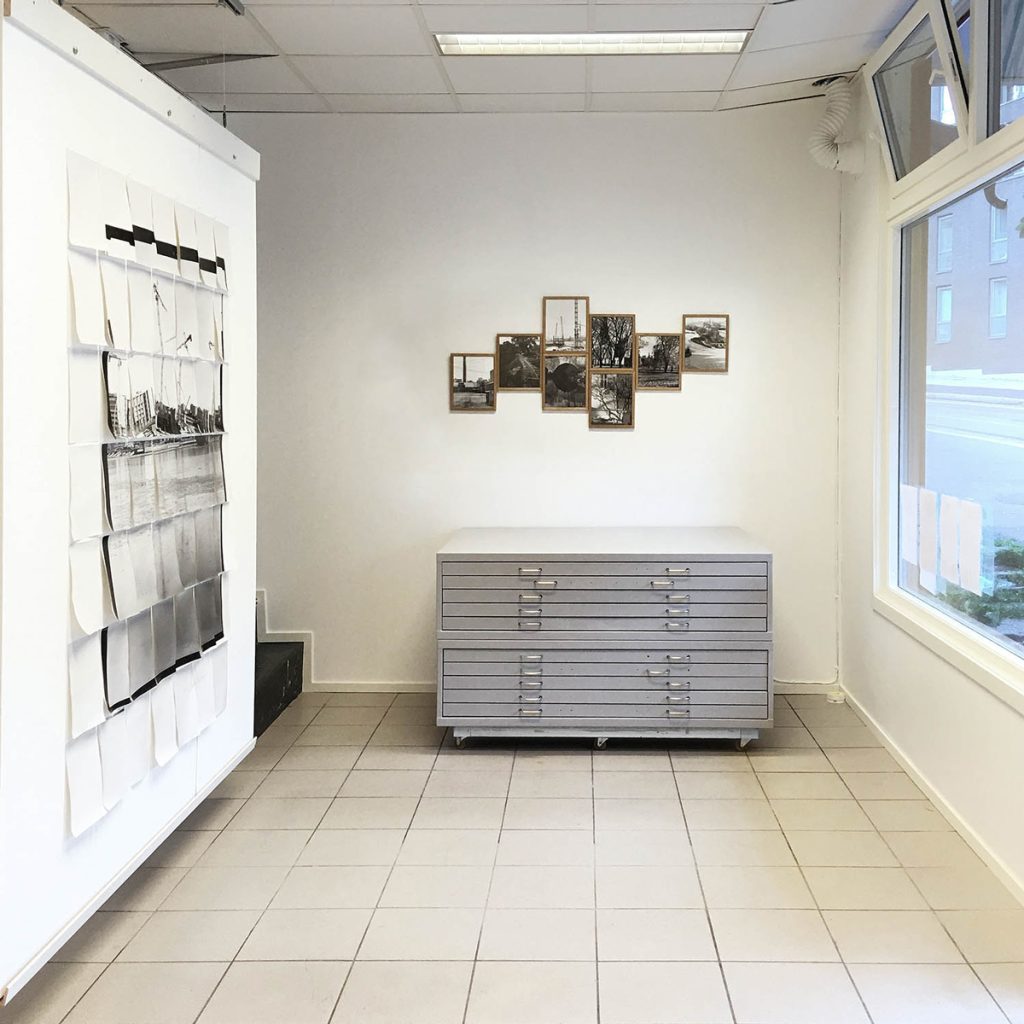Community Focus - Cyan Darkroom Posted On 16th September 2025 To Magazine & Community Focus

For the 7th interview in our Community Focus series we're heading to Oslo to chat to Cyan Darkroom.
Let’s start easy. Tell us a little about the darkroom, what it’s called and how it started.
Cyan darkroom is part of Cyan studio that is a co-op community photostudio and workspace. The studio was opened in 1998 and has always had a darkroom attached. In 2020 we got hold of a separate space where we built a much larger darkroom, hoping that the timing was right to attract enough new users. After a few months with volunteers helping to build, the planned opening was the same week the pandemic lock down started. Luckily for us we managed to keep it open for one person at a time and it turned out that during this period nobody had anything else to do and so many people were looking for a new off-screen hobby!
Seeing the upswing in the interest in analogue photography I reached out to other darkrooms in the Nordic region and formed the Nordic Analog Network. This now consists of 10 darkrooms in all the 5 countries in the Noric region. Through the network we have facilitated a regional artist in residence program that invites Nordic photographers to come and work in a community darkroom in another country so that we get to know each other and can share experience.
What is the best piece of printing tip or advice you have ever received?
Always try to make a substantially different version of the print you are working on, before you hone in on the final print you think you want. I find it opens my mind to se a much darker, or softer contrast or differently cropped version of what I think my print should end up like. In the darkroom it is easy to quickly move towards a desired outcome without really considering all the options and I find making a physical test print that is radically different helps me make better decisions on my way towards the final print.
Where are you based?
Cyan darkroom is based in Oslo, Norway, and conveniently situated in an old kiosk shopfront, near the centre of town and close to the botanical gardens and parks.
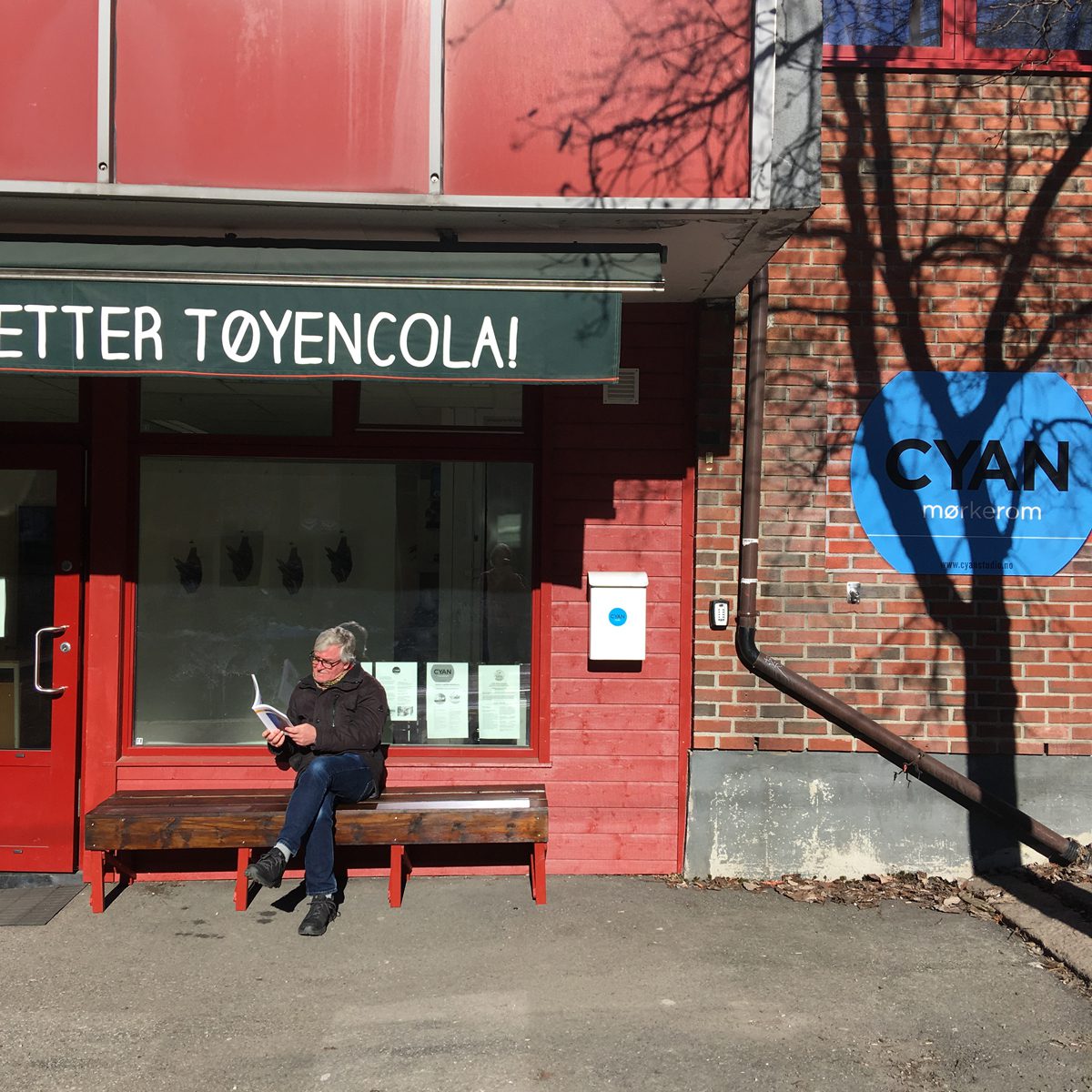
What facilities do you have? How many enlargers etc.
We take pride in being a reliable workspace. Making sure all the enlargers are working and have the extra condensers and negative frames as well as back up lightbulbs and fuses.The darkroom is well equipped with 2 Kaiser small and medium format enlargers, 2 Durst 1200 and one DeVere 504 that are all 4”x5” size. And we have a huge Homrich 10”x10” column enlarger with a colour head and motorized adjustments. Having collected donated equipment over many years we are happy to have both a Zone VI 20x24” print washer, a temperature adjusted Hass Intellifaucet, large drying cabinet, Ilford print dryer and a lot of smaller nerdy and handy darkroom equipment.
We have also recently set up an option for colour printing one weekend a month, where we use three colour enlargers and set up a paper developing machine ready to use. And this offer has been received very well and become popular also for visitors.
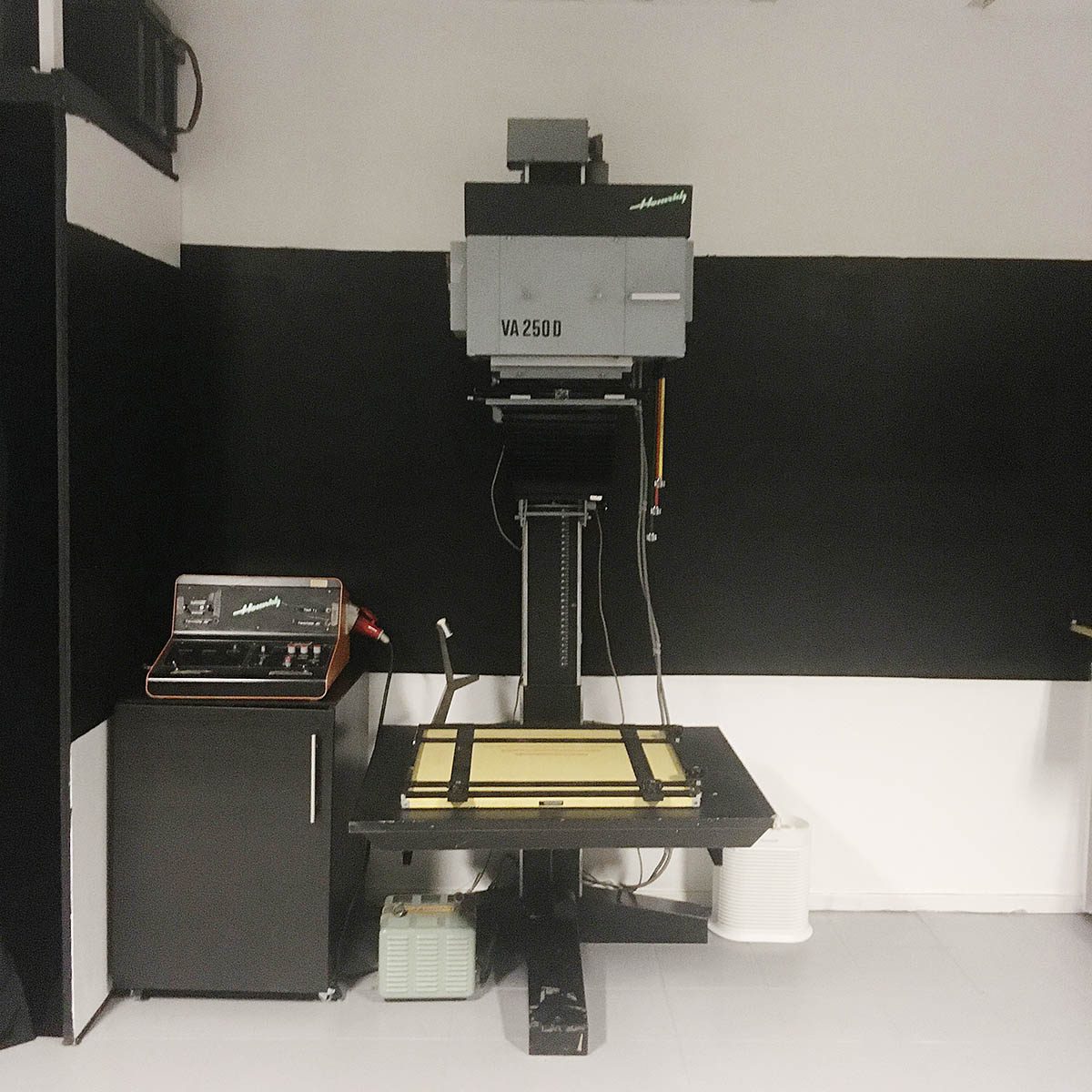 The main part of the room and the equipment we recommend for other darkrooms to install is that we have built the sink like a half way kitchen island with space for several people to stand around working together, making it perfect for teaching small group workshops.
The main part of the room and the equipment we recommend for other darkrooms to install is that we have built the sink like a half way kitchen island with space for several people to stand around working together, making it perfect for teaching small group workshops.
Who can use the space?
The darkroom is open for anyone, but almost all of the users are members that come by on a regular basis.
We have had some visitors from out of town who just need darkroom access for a short term project and through the Nordic Analog Network we have had several international artists in residence visiting for periods of a few weeks.
What’s the best way for people to get in touch with you?
You can read more about us, in Norwegian, on our website: www.cyanstudio.no.
We prefer to be contacted by email or the contact form on our website.
What can they expect when they visit and do they need any experience to come along?
Darkroom users here need to know their own way around a darkroom so they can work by themselves. New users get a 1 hour tour and introduction to the equipment and rules of use to ensure that they are ready to work efficiently and safely. The darkroom is self serviced and open 24-7, it's important that we can trust the users and that the users trust themselves.
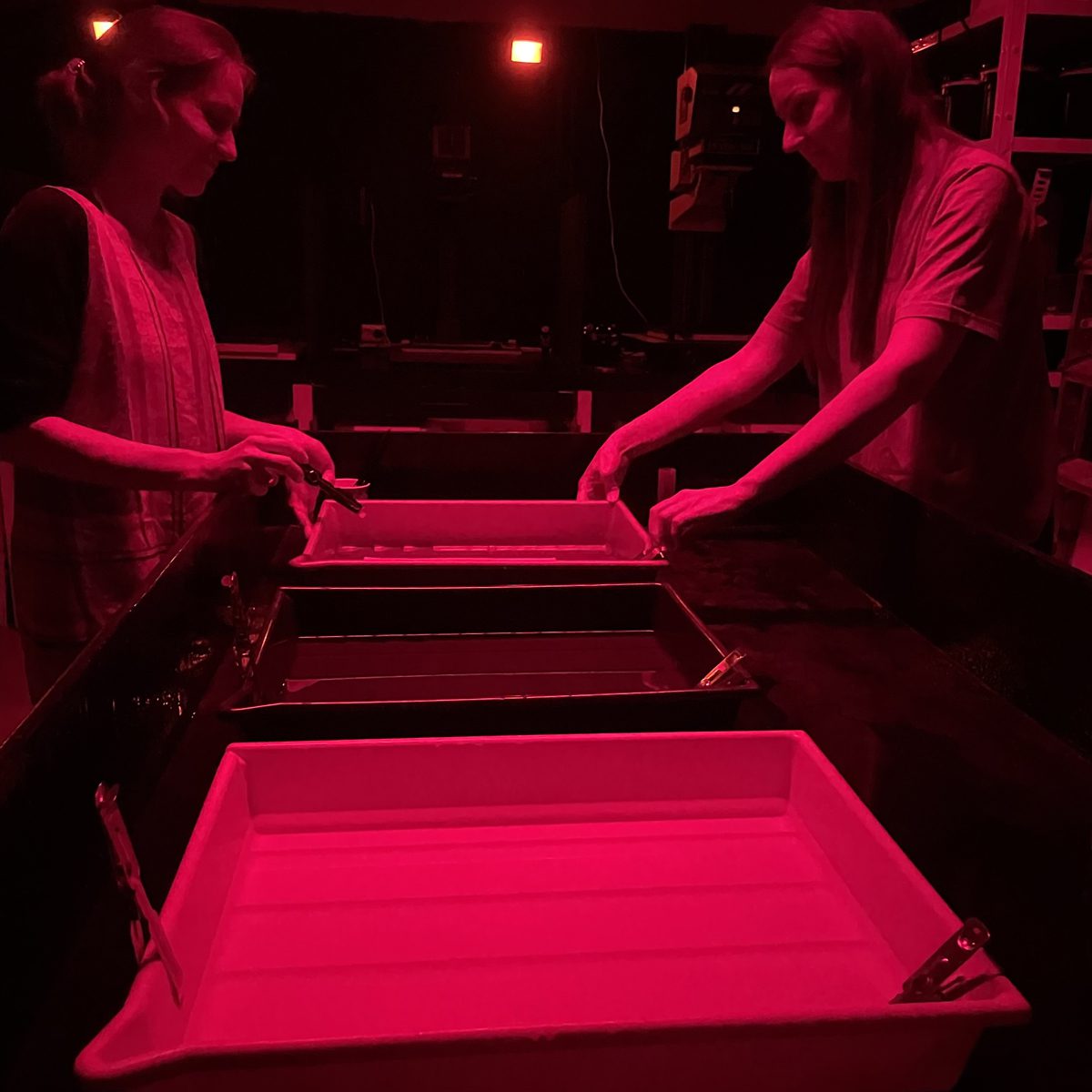
We do offer introductory workshops, for people who start from scratch or want to be sure of the work process before they set up a darkroom at home. These workshops have been surprisingly popular, with little advertising!
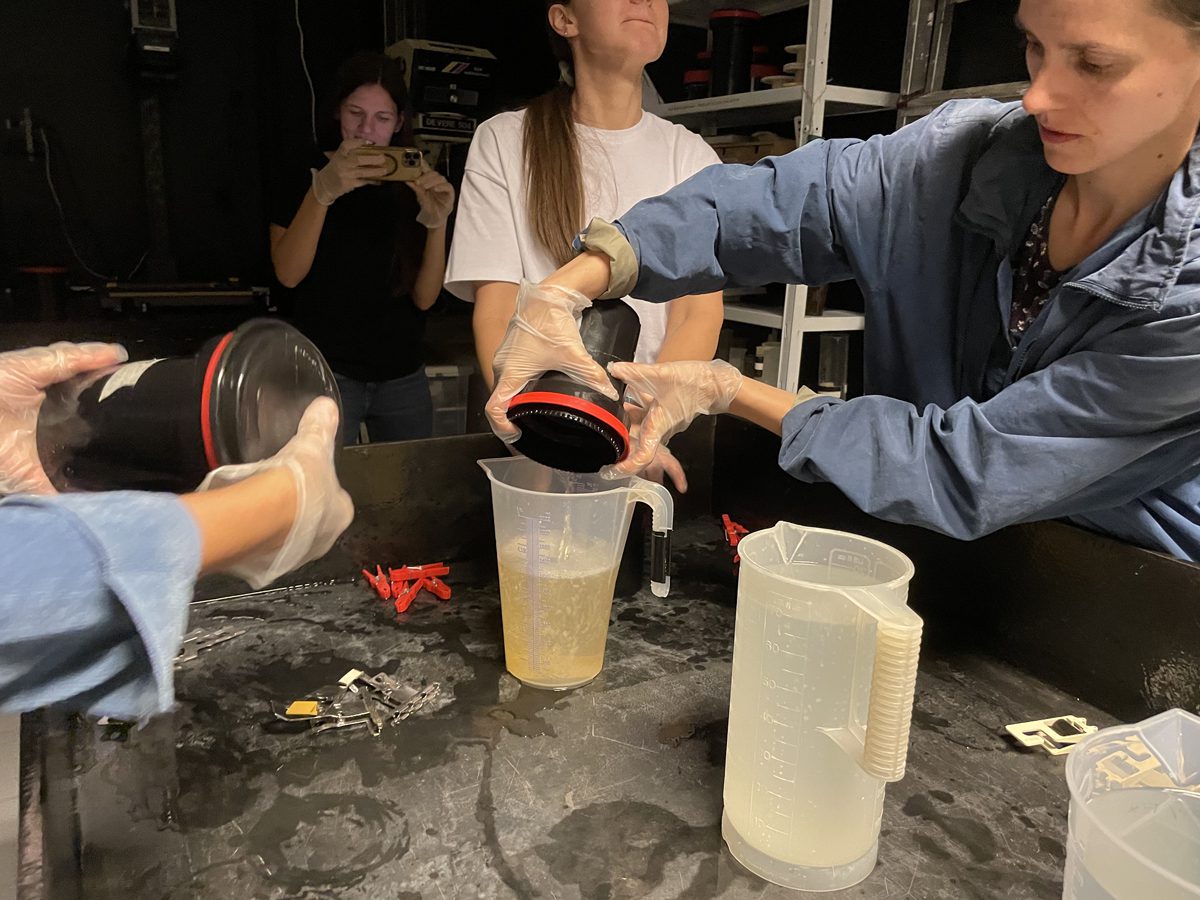
Do you charge a membership or any fees?
We have a membership fee and offer a very discounted price for use for members. It is also possible to just rent access for a day or a week. Our pricing for full membership with free access is priced similar to gym membership, as some members use it frequently and others stop by when they feel they are getting out of shape.
We use our gmail calendar as an online booking system whare users list what equipment they will use. As this is a community darkroom you can't request exclusive access, but members can see times when it's empty. They can also add if they plan to make large prints or do something else unusual to forewarn others.
Membership and rent fee includes the use of black&white chemicals, but not paper or film. We stock a standard set up of ILFORD paper and film developers that our members mix themselves. In addition we have a large collection of expired paper and old chemicals for those who are feeling experimental or are working with playful processes.
Do you have any social media?
You can find us on Facebook @cyanstudio.oslo
and Instagram @studiocyan
Why should people come along?
The Cyan darkroom has a truly welcoming community feel and it is easy to get set up and working when you arrive. We also have a small showroom area, lightroom and kitchen table, so it's easy to stop by and see some of the members´ prints on show and sit down for a coffee to discuss developing times and contrast filtering techniques with anyone around.
Give a shoutout to your personal favourite retailer.
Nearby the Cyan darkroom is the Studio Technika photo lab. They both develop and print analogue for customers and stock and sells a small selection of analogue materials.
This is a perfect neighbour for us when we suddenly run out of fixer or need some extra paper. This lab has been around for decades but was recently at risk of shutting down. Fortunately it was rescued by a group of younger photo artists and technically experienced former customers. They took over ownership and are now running the lab as true enthusiasts, and we love that!
You can find them here and they make beautiful prints to order.
Are there any darkroom printers that you admire?
I remember seeing Adam Fuss` work for the first time, and feeling relieved that someone was doing the things in a serious way with photograms and processes that I am into. Since then I have also fallen in love with the work of photographers like Gary Fabian Miller, Megghan Rippenhoff, Matthew Brandt, Klea McKenna and Chris McCaw. I often show my workshop students the work of Ellen Carey and Michael G Jackson.
Shoutout your favourite photography/darkroom YouTube channels.
I am more a fan of podcasts than video channels, and would want to recommend the Photopocene podcast made by Josie Purcell that I enjoyed a good conversation with some time ago.
Nominate one other person you think should fill in this form and we will reach out to them.
The Finnish Darkroom Association and their darkroom “Mörk” is the collaborating partner behind the Nordic Analog Network and a great place for analogue photographers of all levels. They organized the international Helsinki Darkroom Festival in 2022, and are planning a second festival now.
Check out the association website to follow their plans towards the next festival.
The Nordic Analog Network has a list of the partner darkrooms on their website that is also worth checking out. The Network is now planning for a large group show of Nordic analogue photography in Oslo in November. At the same time there will ba a launch of the next round of darkroom residencies in 2026 :
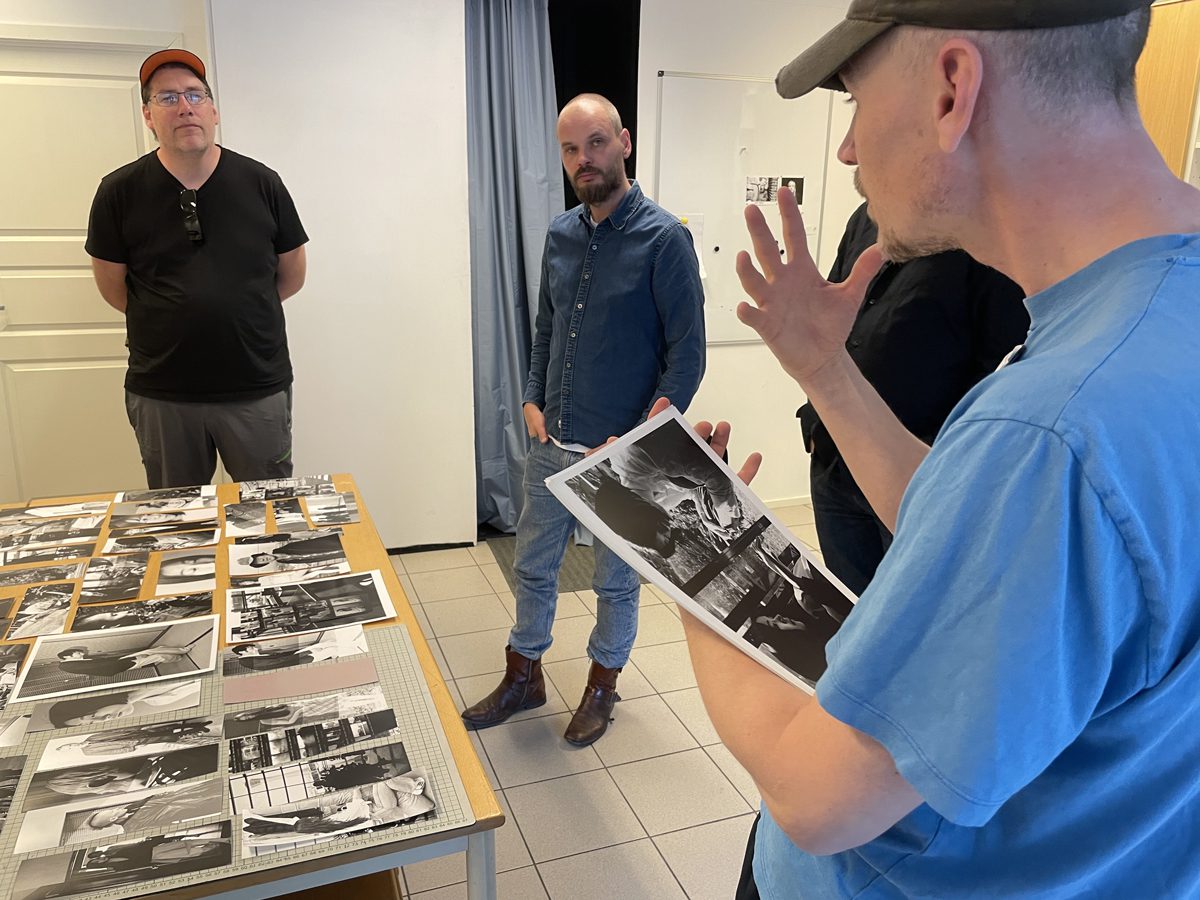
As this is an ILFORD interview, tell us about your favourite ILFORD darkroom products.
The Cyan darkroom has chosen to use ILFORD darkroom materials as our standard offering to members. They are reliably in stock,, easy to use and always of a high quality.
In the darkroom we use MULTIGRADE paper developer, Ilfotec HC film developer and Rapid Fixer. We have always been happy with this set up.
Personally I am a big fan of the ILFORD Ortho Plus film. I use it in my pinhole photographs as well as other more experimental processes. I have always liked the ILFORD fiber papers for my print and the MULTIGRADE classic matt is a favourite. Recently I got hold of a stack of old expired paper, and to my surprise I found that the Ilfospeed RC paper worked really well for my style of experimental lumenprinting, creating some large prints that I plan to exhibit later this year.
About The Author

Stig Marlon Weston
I have worked as a commercial photographer and photo artist since I founded Cyan studio more than 25 years ago. Finishing photography school the year before they started teaching digital editing I have always kept parts of my practice rooted in the analogue world. I believe that the magic of photography is contained in a photographs physical reference to its interaction with the subject through the process of chemicals holding on to light.
Wanting to have a large darkroom myself I created a space and a community in my home town so wmore people can continue to explore the handmade part of photography together.
In my personal projects I focus on landscape photography as a medium to examine the way we see and understand the world around us in a broader sense. I work with cameraless photograms and other more experimental processes of photography to capture images that reflect different ways of seeing. Photography helps me think deeper about how I look and how I read what I see in images of the world. Traveling to different landscapes I have collected photographic specimens in the Amazon rainforest looking at the world as a scientist and I have tried to seek spiritual guidance making imprints of the sun and the moon at a holy mountain in Spain.
Exhibiting my work in galleries and at photo festivals I am going to the Experimental Photofestival in Barcelona this summer to teach a workshop discussing the participants photoprojects. I hope we will meet up there!
My website is here: http://www.weston.no
and you can find me on instagram: @stigmw

